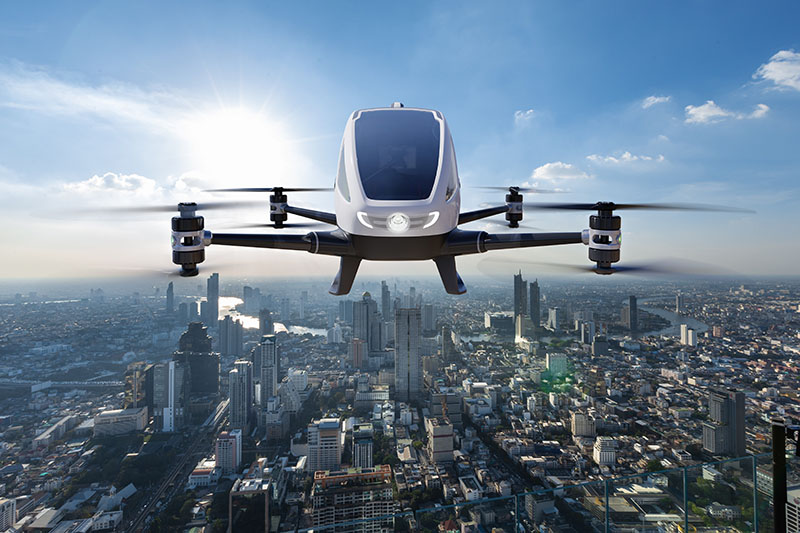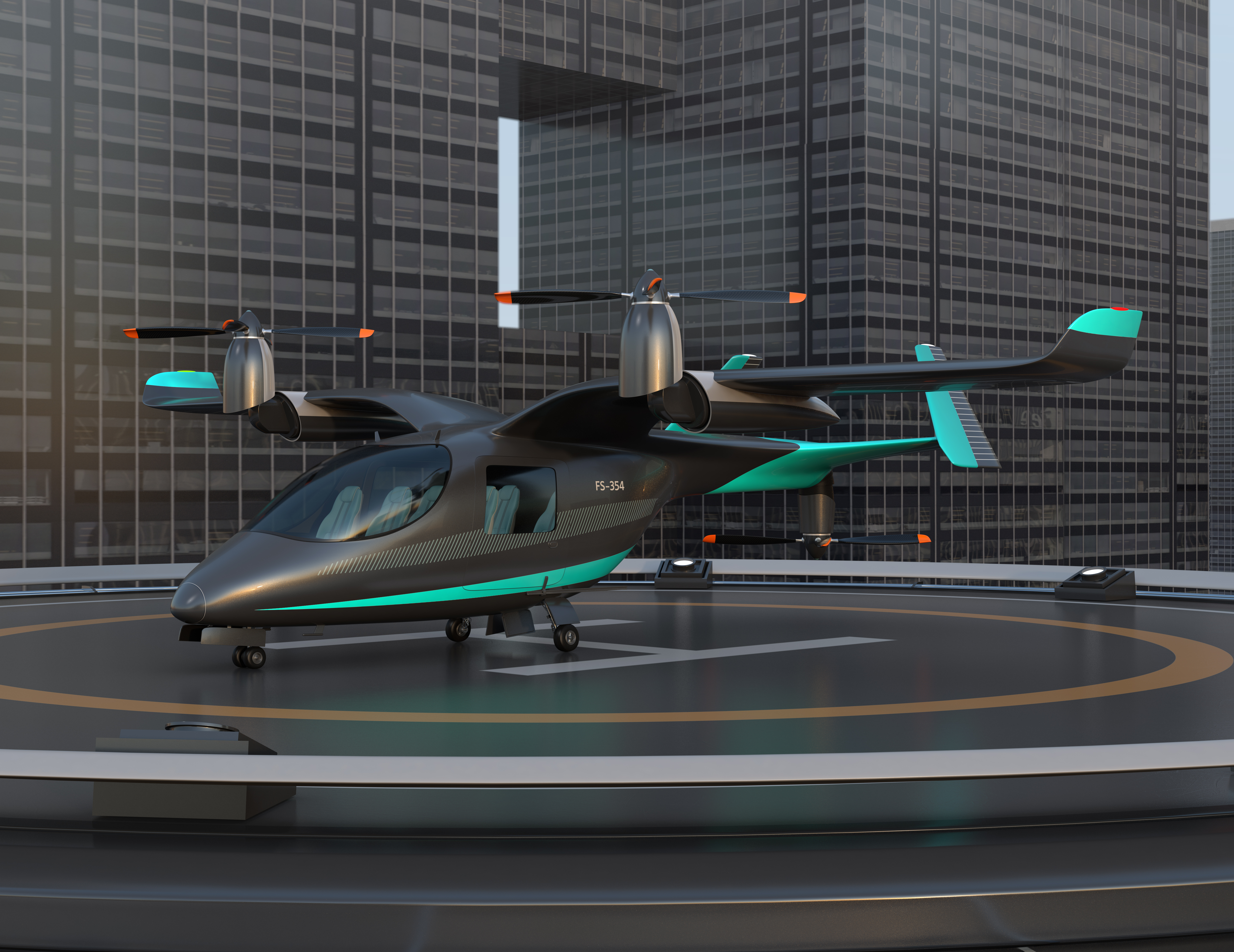Market Connector: Achieving Commercial Viability for eVTOL Aircraft

Fielding electrical vertical takeoff and landing (eVTOL) aircraft on a mass scale throughout cities worldwide is going to require perfecting the lithium-ion batteries and battery management systems that power them.
Lithium-ion batteries are used in electric vehicles across the board due to their high energy density. But with eVTOL systems, these batteries must improve energy density further to ensure eVTOLs have enough power to perform multiple flights without frequent recharging. This involves developing batteries with higher volumetric energy density, which is measured in watt-hours per liter (Wh/L) and concerns how much energy can be stored in a given space.
Meanwhile, improving gravimetric energy density is crucial to minimize the weight of the battery packs, allowing for more payload capacity and better performance capabilities. Gravimetric energy density, which measures the amount of energy stored in a given weight, is measured in watt-hours per kilogram (Wh/kg).
The entire eVTOL industry is currently working to make these goals a reality, and many key breakthroughs have already been achieved.
The right EMI protection is essential for the performance of these high-powered batteries and their battery management systems (BMS). Disruption of eVTOL battery systems due to EMI interference can lead to improper operation, reduced battery efficiency, or safety issues that could jeopardize the well-being of passengers and crew.
Who: Major developers in the eVTOL battery technology field include lithium-ion battery manufacturer Amprius, the U.S. Department of Energy’s Oak Ridge National Laboratory, Archer Aviation, and NASA, among others. Multiple eVTOL developers, including Joby Aviation, Archer Aviation, Volocopter, and more, are also testing prototypes with the goal of acquiring necessary certifications from the Federal Aviation Administration (FAA), European Union Aviation Safety Agency (EASA), and other regulatory agencies.
The eVTOL industry is a relatively new field in electric vehicles and aerospace and is undergoing extensive growth. A wide array of manufacturers, developers, and vendors are currently working toward the development of this technology or vying to enter the space in hopes of bringing a high-performance and efficient product to market that lives up to the promises of Advanced Air Mobility (AAM).
What: One of the main priorities of eVTOL developers is developing a reliable, high-performance battery with high energy density and stability over time to increase the frequency of flights, aircraft range, and charging speeds.

Electric vehicle (EV) batteries found in common commuter electric cars typically have a gravimetric energy density of approximately 300 watt-hours per kilogram. But for the eVTOL industry, the benchmark is even higher at 450 watt-hours per kilogram.
The aforementioned battery manufacturer Amprius announced in March 2023 that they’ve surpassed this benchmark with the unveiling of a 500 watt-hours per kilogram and 1300 watt-hours per liter lithium-ion cell battery. Chinese battery manufacturer CATL, one of the world’s largest battery manufacturers, announced around the same time that they too had developed a battery capable of similar gravimetric energy density.
Where: The development of eVTOL systems is taking place internationally as cities across the globe anticipate onboarding Urban Air Mobility (UAM) and Regional Air Mobility (RAM) into their transportation infrastructure.
As of the start of 2024, there are more than 200 cities in more than 50 countries worldwide with plans to launch UAM and RAM initiatives.
When: The development and testing of eVTOL systems are ongoing. As of now, several eVTOL developers are currently flight-testing full-sized prototypes with anticipation of launching services within the next decade.
Developer Joby Aviation is one of them. The company recently completed testing for its pre-production aircraft and is in the midst of acquiring the necessary certifications for its production-intended eVTOL platforms.
Why: The development of efficient and reliable battery systems is required for the maturation of eVTOL aircraft technology. High-performance batteries coupled with efficient designs optimized for size, weight, and power (SWaP) are essential to bring eVTOL systems up to commercial speed.
Commercial-ready eVTOL systems must be able to safely carry two to six passengers, plus luggage and cargo, depending on the type and size of the eVTOL. Passenger transport eVTOL aircraft should be able to carry a minimum payload of approximately 440 pounds (200 kg) per passenger seat. eVTOLs designed for cargo transport should have a payload capacity of up to approximately 1,100-2,200 pounds (500-1,000 kg) for small cargo craft and greater than that for medium to large cargo craft.
Range-wise, passenger eVTOLs should be able to traverse around 60 miles (96 km) or more, which is within the range for most short-haul flights within urban areas. Cargo craft should be able to cover distances suitable for regional transport, approximately 150 miles (241 km). Ideally, these aircraft should be able to fast charge from empty to fully charged in under an hour to enable frequent flights.
Without the payload capacity and range advantages enjoyed by traditional internal combustion engines due to the higher energy density of fuel, perfecting eVTOL lithium-ion batteries needs to take center stage. Developers should consider the right EMI protection when designing eVTOL battery systems and the vehicle’s overall electrical architecture to ensure they’re achieving the desired performance, efficiency, and safety.
About Us
Amphenol Aerospace is an industry-leading designer and manufacturer of interconnect products for the military and aerospace markets.
Search for parts through our Technology guide, or visit our Product Configurator to get 3D models of the exact configuration that you are looking for.